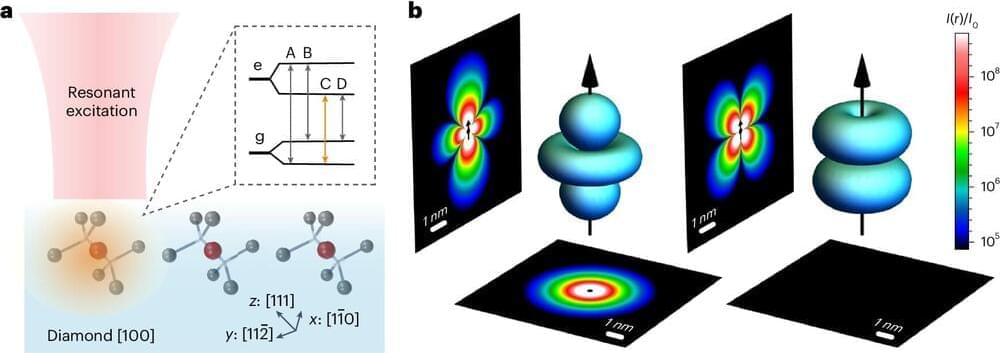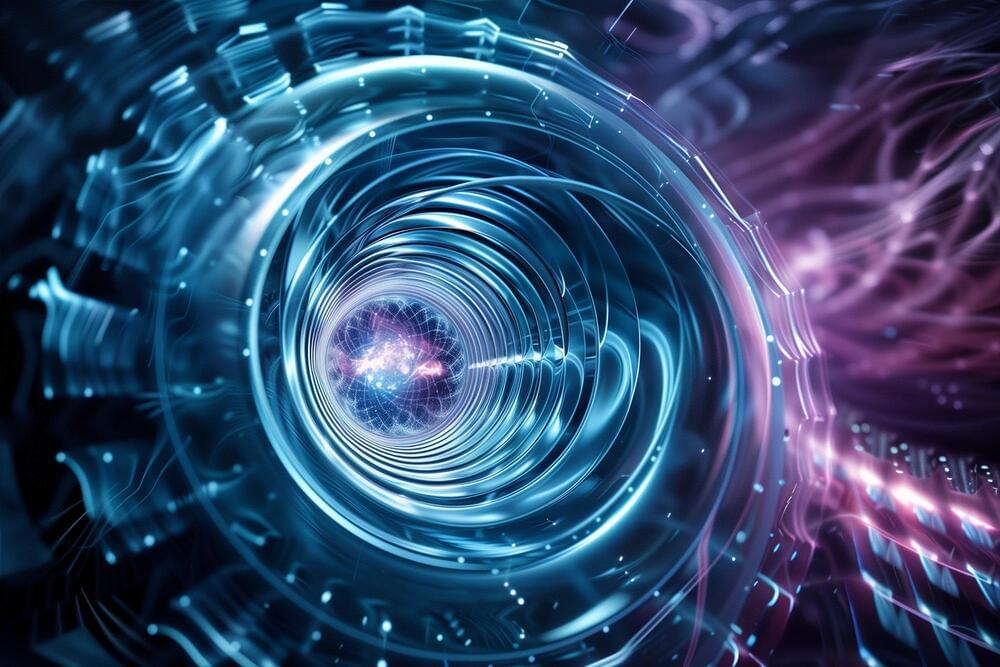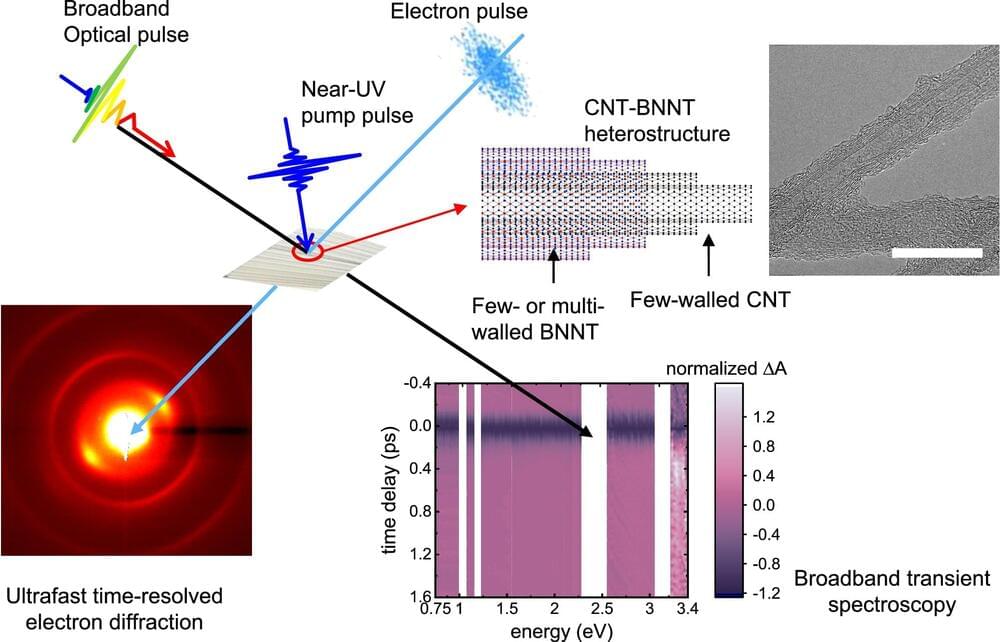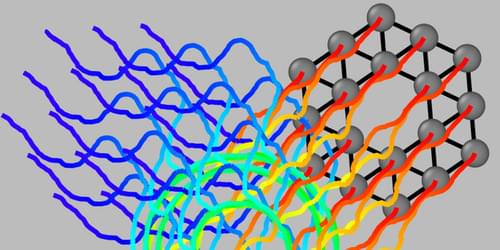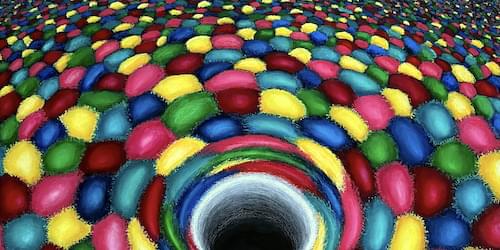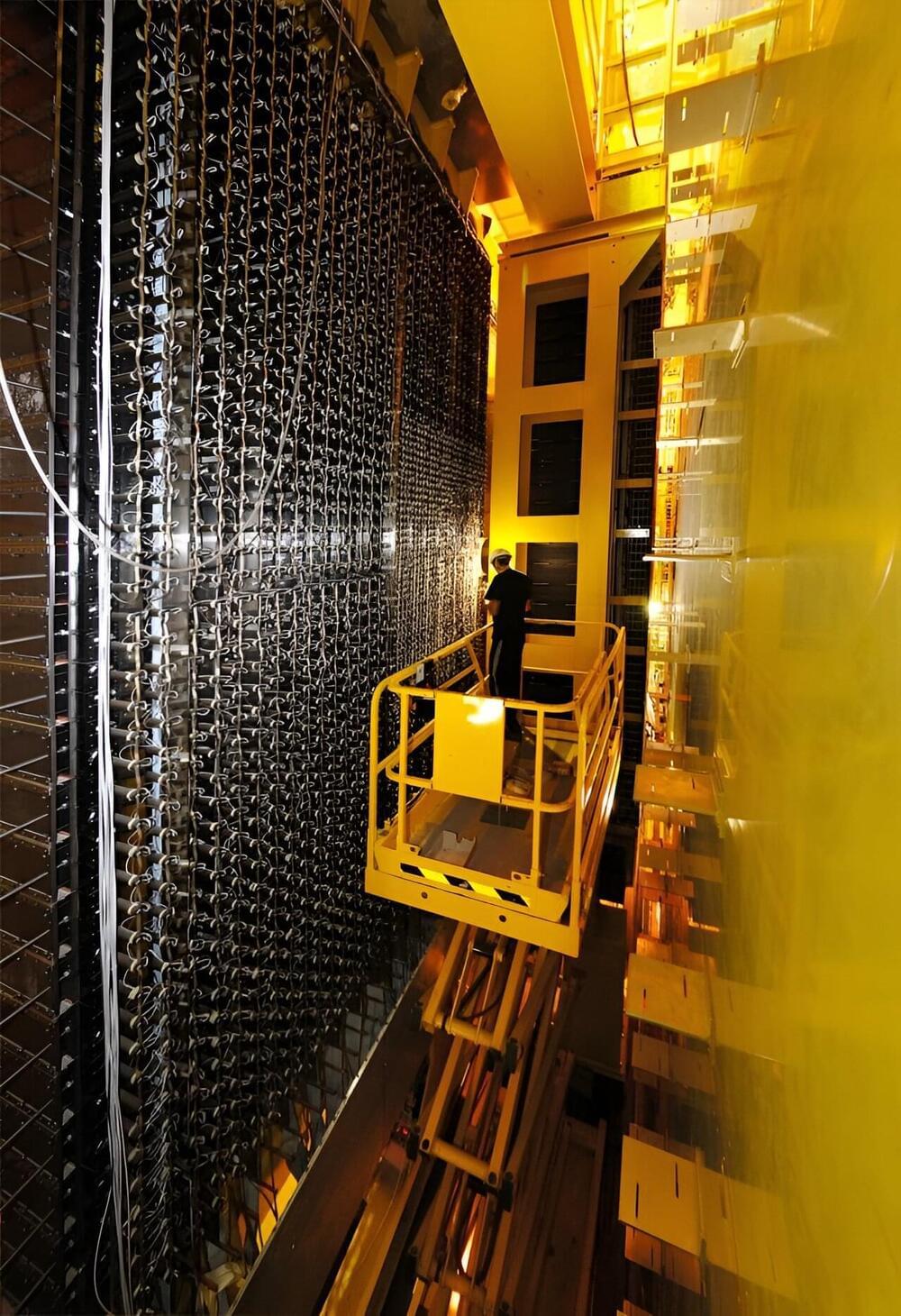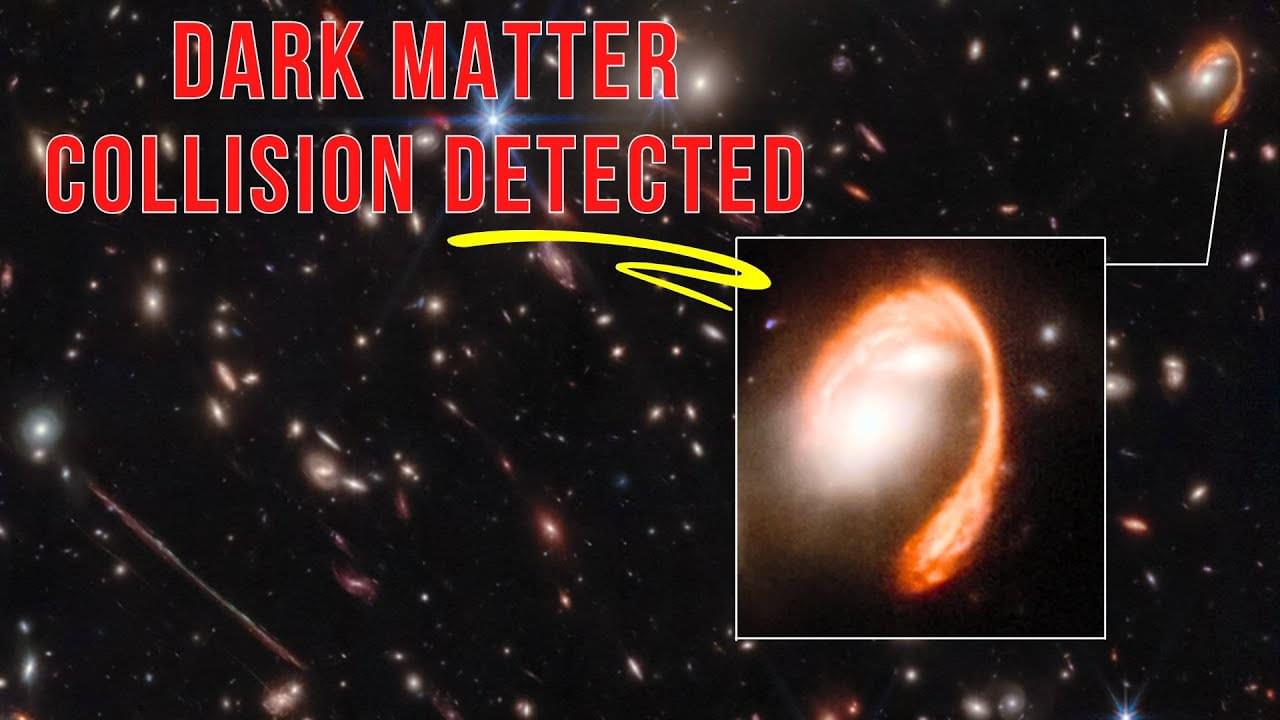Similar to how a radio antenna plucks a broadcast from the air and concentrates the energy into a song, individual atoms can collect and concentrate the energy of light into a strong, localized signal that researchers can use to study the fundamental building blocks of matter.
Category: particle physics – Page 85
A crested bigscaleCredit: Karen Osborn/Smithsonian
“But what isn’t absorbed side-scatters into the layer, and it’s absorbed by the neighboring pigments that are all packed right up close to it,” Osborn told Wired. “And so what they’ve done is create this super-efficient, very-little-material system where they can basically build a light trap with just the pigment particles and nothing else.”
The result? Strange and terrifying deep-sea species, like the crested bigscale, fangtooth, and Pacific blackdragon, all of which appear in the deep sea as barely more than faint silhouettes.
Recent advancements in spintronics have enabled better prediction and control of spin currents by studying the magnetic properties and temperature effects on materials.
Spintronics is attracting significant interest as a promising alternative to conventional electronics, offering potential benefits such as lower power consumption, faster operation, non-volatility, and the possibility of introducing new functionalities.
Spintronics exploits the intrinsic spin of electrons, and fundamental to the field is controlling the flows of the spin degree of freedom, i.e., spin currents. Scientists are constantly looking at ways to create, remove, and control them for future applications.
Research groups from the University of Tsukuba and the University of Rennes have discovered a novel phenomenon in which a nested structure of carbon nanotubes enveloped in boron nitride nanotubes facilitates a unique electron escape route when exposed to light. This finding introduces promising avenues for various applications, including the creation of high-speed optical devices, rapid control of electrons and other particles and efficient heat dissipation from devices.
Collections of mobile, interacting objects—flocks of birds, colonies of bacterial, or teams of robots—can sometimes behave like solid materials, executing organized rotations or gliding coherently in one direction. But why such systems display one kind of collective organization rather than another has remained unclear. Now researchers have developed a theory that can predict the pattern most likely to emerge under specific conditions [1]. The theory, they hope, may be of use in designing living and artificial materials that can autonomously adapt to their environment.
An “active material” is any system made up of interacting objects able to move under their own power, such as animals, cells, or robots. In so-called active solids, a subset of active materials, strong cohesion between neighboring elements makes the collective act somewhat like a solid. Examples include clusters of certain cell types and networks of robots with rigid connections.
Active solids can display several kinds of collective, organized motion, says Claudio Hernández-López, a PhD student at the École Normale Supérieure and Sorbonne University in France. For example, researchers have observed both coherent rotations and coherent translations in collections of microbes from the phylum Placozoa. Existing theories, however, fail to explain pattern selection—why, if several patterns are possible, does one pattern of behavior emerge rather than another?
Primordial black holes (PBHs)—hypothetical objects formed by the gravitational collapse of dense regions in the early Universe—have been invoked as dark-matter candidates. But for PBHs to constitute all dark matter, they’d have to be extremely light, possibly weighing less than small asteroids. Now Elba Alonso-Monsalve and David Kaiser of the Massachusetts Institute of Technology show that these diminutive PBHs could possess an exotic property—a net color charge (such a charge characterizes quarks and gluons in quantum chromodynamics theory) [1]. Such color-charged PBHs might have left potentially observable signatures, says Kaiser.
Observations rule out that stellar-mass PBHs could fully explain dark matter, but PBHs weighing between 1017 and 1022 g remain viable candidates. Since a PBH’s mass should relate to its age, this mass range corresponds to PBH formation immediately after the big bang, when the Universe was still a hot plasma of unconfined quarks and gluons. Most PBHs would have formed by engulfing large numbers of quarks and gluons having a distribution of color charges. These PBHs would be color-charge neutral and sufficiently massive to live until today. However, the duo’s calculations show that a few PBHs could have formed from regions so tiny that the charges of the absorbed gluons would be correlated, giving these PBHs a net charge.
Color-charged black holes have long been considered to be mathematically possible, but the new study is the first to propose a realistic formation mechanism, says Kaiser. The small sizes imply that they would have since evaporated. Yet their presence in the early Universe might have disrupted the distribution of protons and neutrons when the big bang created the first nuclear isotopes, leaving subtle traces in the cosmic abundance of the elements.
On 5 July 2022, protons began colliding again in the LHCb detector after a three-and-a-half-year break known as Long Shutdown 2 (LS2), marking the start of the third run of the Large Hadron Collider (LHC).
During this period, the original LHCb detector at the LHC was largely dismantled and an almost completely new detector constructed. The 2020 update of the European Strategy for Particle Physics approved by the CERN Council strongly supported exploiting the full potential of the LHC for studying flavor physics.
A further upgrade of the LHCb detector, known as Upgrade II, is planned to allow LHCb to operate at a much higher instantaneous luminosity and cope with the demanding data-taking conditions of the High-Luminosity LHC (HL-LHC). The latest technological developments will be taken into account to design the new detectors.
A simple concept of decay and fission of “magnetic quivers” helps to clarify complex quantum physics and mathematical structures.
Researchers employed magnetic quivers to delve into the fundamentals of quantum physics, specifically through the lens of supersymmetric quantum field theories. They have provided a novel interpretation of the Higgs mechanism, illustrating how particles gain mass and the potential decay and fission within QFTs.
Pioneering Quantum Physics Study
Discover the groundbreaking Self-Interacting Dark Matter (SIDM) theory that suggests dark matter particles might collide and interact with each other. Learn how recent studies on the El Gordo galaxy cluster support this revolutionary idea, potentially changing our understanding of the universe’s structure and evolution. Dive into the cosmic dance and stay updated with the latest space discoveries!
Chapters:
00:00 Introduction.
00:44 The Dance of Self-Interacting Dark Matter.
02:39 Unveiling the Strengths and Weaknesses of CDM and SIDM
05:14 Exploring Dark Matter: Methods and Future Prospects.
09:20 Outro.
09:37 Enjoy.
Best Telescopes for beginners:
Celestron 70mm Travel Scope.
https://amzn.to/3jBi3yY
Celestron 114LCM Computerized Newtonian Telescope.
The authors show that dipolar condensates are prevalent in bosonic systems due to a self-proximity effect. Furthermore, they propose a new type of Josephson effect called dipolar Josephson effect, where a supercurrent of dipoles happens in the absence of particle flow.
